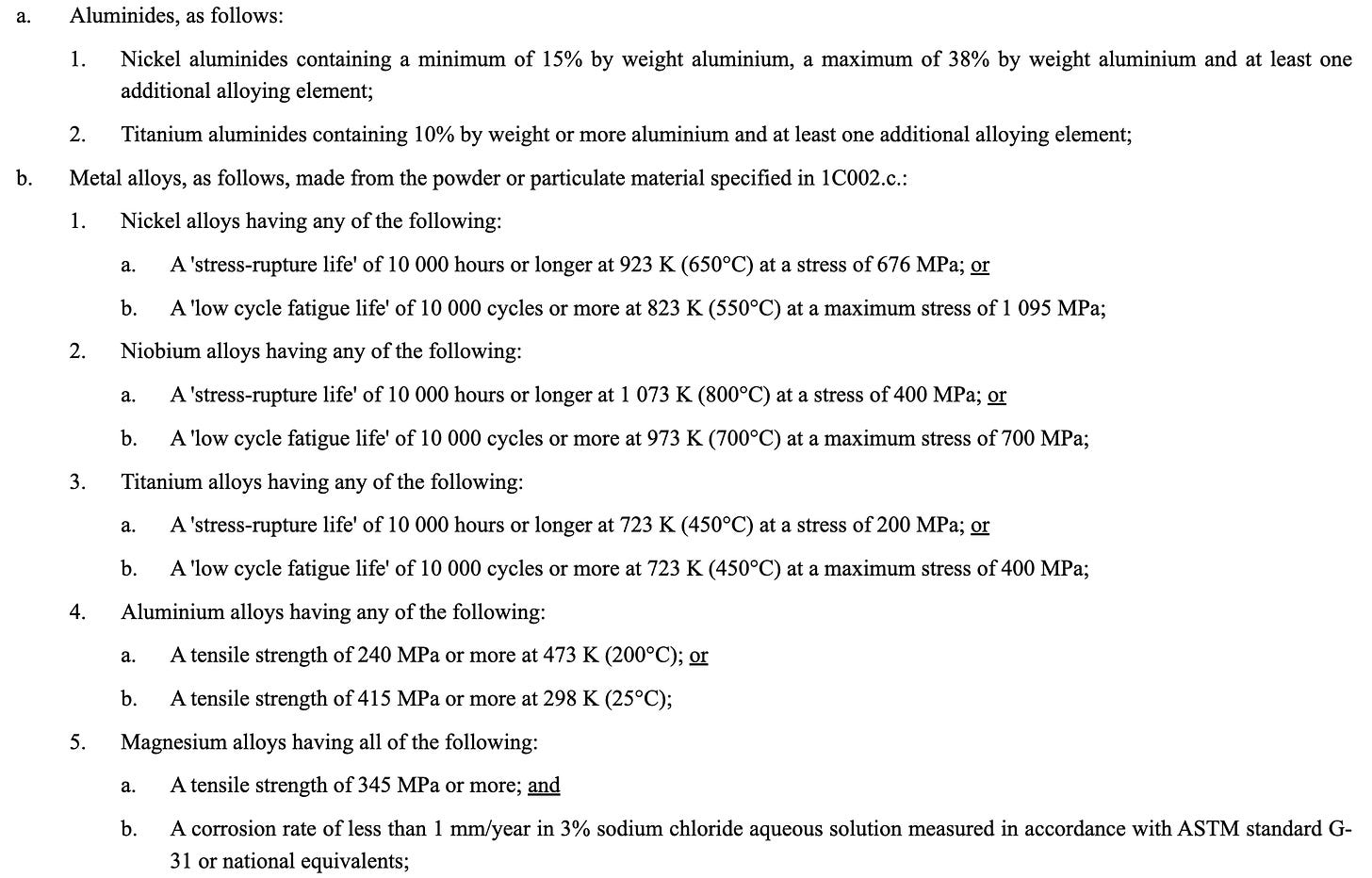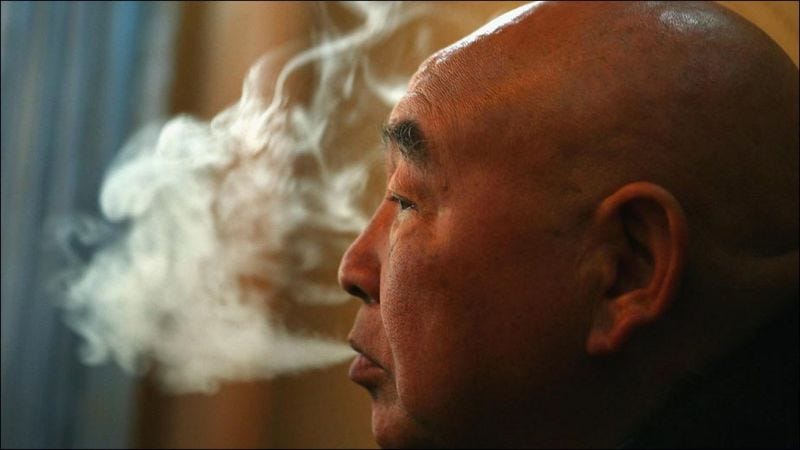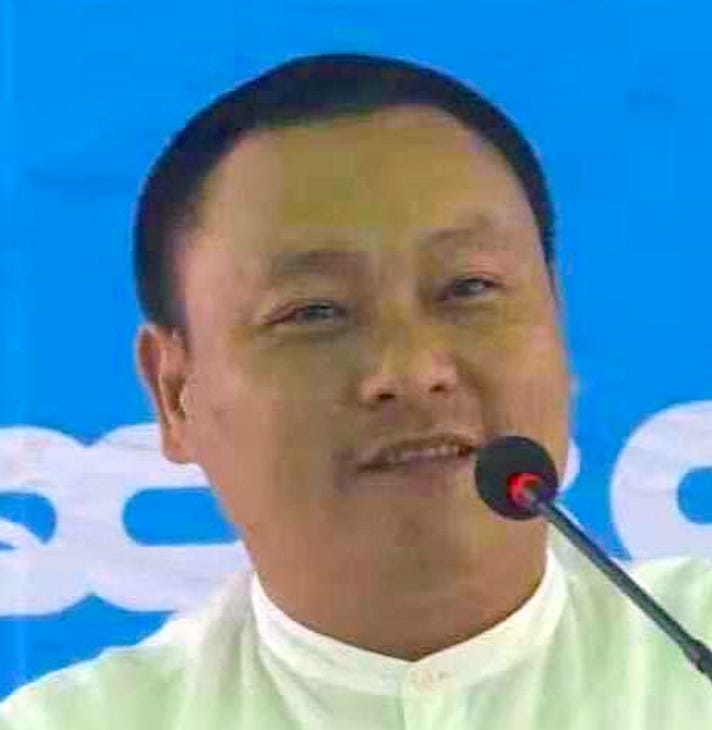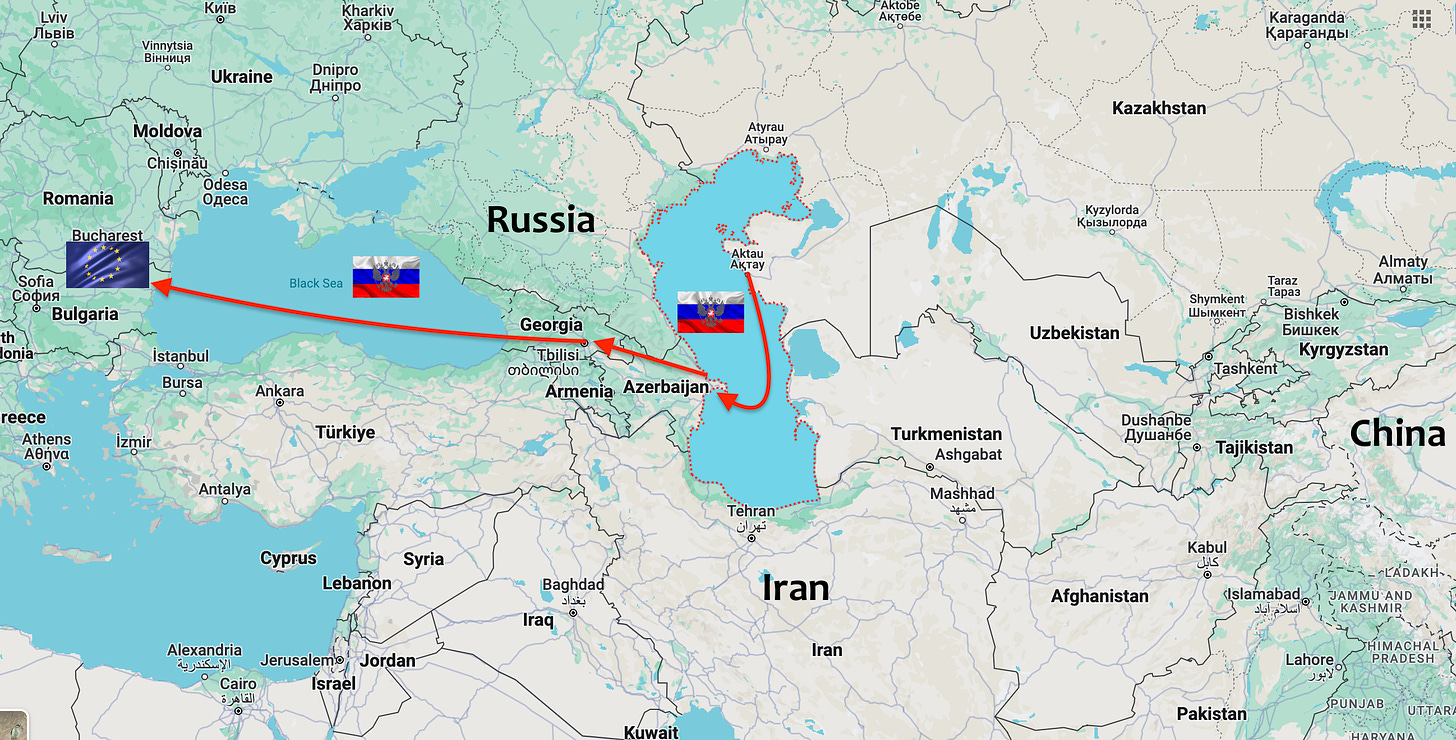Lynas take-over plans of MP; Aclara's PEA; Myanmar warlords and rare earths; EU dual use export restriction guide; Kyrgyzstan peddles Kutessay II; Serra Verde ship product; BRE, HAS, Vital, Aru ++
Rare Earth 05 February 2024 #139
We had not anticipated to publish another post before the China Spring Festival, but events have come to light which warrant timely analysis and comment.
So you’ll find here our takes on the various matters.
//Politics
‘Mines against humanity’: The scale of Australian investment in Myanmar revealed
By September 2020, Australian investment in Myanmar was world-leading – 39 per cent of international permits, or 11, had gone to Australia, surpassing China (36 per cent), Thailand (11 per cent), Japan (7 per cent) Vietnam (4 per cent) and the United Kingdom (3 per cent).
ALS Testing Services Company, the Myanmar-registered subsidiary of Australian Laboratory Services, has provided sample testing services to Myanmar-based mining company Access Asia Mining and two junta-controlled universities after the coup attempt, according to financial statements leaked to Justice for Myanmar.
Former Communist loyalist warlords arrested and extradited to China
10 major suspects in northern Myanmar were escorted back to China
On January 30, 10 major criminal suspects in northern Myanmar, including Bai Suocheng, Bai Yingcang, Wei Huairen, Liu Zhengxiang, Liu Zhengmao, and Xu Laofa, were on a plane being escorted back to China.
In the border area between China and Myanmar there are several ethnic Chinese tribes. Originally most of them were ruled by officials of the former Communist Party of Burma. After the collapse of the Communist Party of Burma in 1989 these officials first turned into warlords with their own private armies and later during the 2000s into somewhat legitimate politicians, “elected” to office.
The Chinese minority Wa State in Myanmar, however, is still run by a Communist Party.
Warlord Bai Suocheng, a commander of the Myanmar Nationalities Democratic Alliance Army, a splinter group of the defunct Communist Party of Burma, and his family ran a drug trafficking ring as well as online and offline casino businesses from the Kokang self-administered zone in Myanmar.
China quietly tolerated the Burmese party-officials-turned-warlords planting poppies for “poisoning decadent western capitalist pigs with drugs” in Myanmar. Perhaps the warlords considered themselves untouchable, like Communist officials tend to view themselves after a while.
But Beijing’s tolerance ended when Bai and his associates went overboard, and aided abductions and enslavement of Chinese citizens, who were then forced into participating in massive telecom scams against Chinese people all over Asia. And this is, what got the warlords arrested, beginning with the Ming family from Kokang last November.
The rare earth connection
We wondered, if these arrests are related to the rare earth mining in Myanmar. To the best of our research, they aren’t.
Myanmar’s ion adsorption clay rare earth resources are confined to a relatively small area along the border of Myanmar’s Kachin State and China, north of Kokang. The area is referred to as the Kachin First Special Zone.
Common belief is that Kachin State is run exclusively by the Kachin Independence Army.
Zahkung Ting Ying and the NDA-K
The Kachin First Special Zone, however, is the domain of the erstwhile New Democratic Army – Kachin (NDA-K), the armed wing of another off-shoot of the defunct Communist Party of Burma, called the Kachin State Progressive Party (KSPP). The strongmen there are Zahkung Ting Ying and his son Zahkung Ying Sau, belonging to a small Chinese minority living on both sides of the China-Myanmar border, the so-called Ngochang. Members of this Tibetan-Burmese speaking minority are less than 30,000 on the China side, while the number of Ngochang living on the Myanmar side is unknown.
Same as Bai’s Myanmar Nationalities Democratic Alliance Army had done, the 1,000-strong NDA-K had agreed to be absorbed into Myanmar’s regular army “Tadmadaw” as “Border Guard Force” back in 2009. That move gave them access to national army “Tadmadaw” funding and weapons - and it may have given the Tadmadaw access to NDA-K revenue streams. However, Zahkung Ting Ying still calls the shots at this “Border Guard Force.”
The NDA-K has been profitably protecting the up to 16,000 mainland Chinese rare earth expert workers from Ganzhou, Jiangxi, China. The rare earth workers had followed the call of “Chinese bosses” and migrated to northern Myanmar for greener pastures, after Beijing had forced the successive closure of the Jiangxi ion adsorption clay mines 10 years ago.
So far Zahkung Ting Ying and his son are not in the cross-hair of Beijing, but they have been warned.
European Union
Commission publishes new Guidelines for the annual report on dual use export controls
On 17 January 2024, the Commission published these new Guidelines in view of the preparation of its annual report on dual-use export controls. The goal is to increase transparency through more information sharing on Member States’ licensing decisions in the area of export controls.
The Guidelines were agreed with Member State’ experts, and set out in detail the process for the collection of licensing data by the European Commission and the competent authorities of the Member States. They will allow the EU Annual Export Control Report to include detailed licensing information, such as authorisations for dual-use exports as well as denied transactions.
Enhanced public reporting and greater transparency on EU export controls are key elements of the implementation of the 2021 Regulation on dual-use export controls.
Whenever China updates regulation and the term “export controls” appears, there is big screaming and hyperventilation in western media.
When the EU Commission does it, no-one bothers.
What is this?
The guideline covers export licensing for products, which have both, civilian and defense applications, hence are ‘dual use’.
What does it include?
There are lots of products covered. Let’s only look at what is covered under the regulation close to metals (small excerpt):
This is not very specific and could make anything under the sun dual-use products subject to export controls, but happily there is Regulation (EU) 2021/821, which specifies a little bit closer, if you have the nerve and time to wade through all the bureaucrat lingo:

Taking the a.m. specifications we searched and found a number of products, which would concretely be subject to EU export controls:
B1, nickel alloys would include:
Inconel 718
Nimonic 105
Hastelloy X
B2, niobium alloys would include:
C-103 (10% hafnium and 1% titanium)
Cb-752 (5% tantalum and doped with zirconium and carbon)
FS85
B3, titanium alloys would include:
Ti-6Al-2Sn-4Zr-2Mo (Ti 6242)
Ti-6Al-4V (Grade 5)
Ti-6Al-2Sn-4Zr-6Mo (Ti 6246)
Ti-6Al-2Sn-4Zr-2Mo-0.08Si (Ti 6242S)
B4, aluminium alloys falling under this regulation would include:
Aluminum Alloy 6061
Aluminum Alloy 7075
Aluminum Alloy 2024
B5, magnesium alloys would include:
AZ31 (3% aluminum and 1% zinc)
AZ61 (6% aluminum and 1% zinc)
AZ80 (8% aluminum and 0.5% zinc)
ZK60 (6% zinc and 0.5% zirconium)
This is only the tip of the iceberg. But you get it, export control for astonishingly benign products is quite common everywhere.
Meanwhile, at the U.S. Department of Commerce
Voluntary Self-Disclosure
The Bureau of Industry and Security actively encourages the submission of Voluntary Self-Disclosures (VSDs) from parties who suspect they may have violated the Export Administration Regulations (EAR). VSDs serve as a strong indication of a party’s commitment to complying with U.S. export control requirements. Additionally, they can provide BIS with valuable information about other potential violations.
BIS conducts a thorough review of all VSDs received to assess if violations of the EAR have occurred and to determine the appropriate corrective actions when violations have taken place. For more detailed information on the submission of VSDs, please refer to Section 764.5 of the EAR.
Parties are strongly encouraged to submit VSDs electronically to BIS_VSD_INTAKE@bis.doc.gov.
Assistant Secretary Axelrod explains:
Confession-lite at the Church of Commerce.
Kyrgyzstan
The US Ambassador and the Deputy Foreign Minister discussed cooperation in the field of rare earth metals
Today, February 1, Deputy Minister of Foreign Affairs of the Kyrgyz Republic Aibek Moldogaziev met with US Ambassador Extraordinary and Plenipotentiary Leslie Viguerie.
The department noted that special attention was paid to the issues of expanding trade and economic cooperation, interaction in the C5+1 format, as well as cooperation in the field of rare earth metals.
The Kyrgyz actually want someone to take over the historical Kutessay II rare earth mine and to pay the arbitration award amount that Kyrgyzstan owes to Stans Energy’s lawyers for the previous expropriation of Stans Energy’s mining license, which Stans had acquired in a single-bidder auction for less than US$900,000.
Since then several attempts were undertaken, for example by Baotou Hongbote Technology Co., Ltd., a rare earth pigment maker affiliated with China Northern Rare Earth Group, and by Neon Mining Ltd/Ricky Holdings, Singapore, to breathe life into the project, with no success. Stans Energy’s lawyers won’t negotiate the amount due to them under the arbitration award.
Just recently the Kyrgyz government officially asked Russia to attend to Kutessay II. After all, it had originally been the USSR’s largest rare earth mining and processing operation.
But also Russia is unlikely to agree to the terms.
Related
Central Asia Seen as Key to Breaking China's Rare Earth Monopoly
U.S. officials hoping to break China's near monopoly on the production of rare earth elements needed for many cutting-edge technologies should engage the governments of Central Asia to develop high concentrations of REEs found in the region, says a new report.
The study by the U.S.-based International Tax and Investment Center warns that a failure to act could leave China with a "decisive advantage" in the sector, which is crucial to green energy, many new weapons systems and other advanced technologies.
Monazite, zircon, apatite, xenotime, pyrochlore, allanite and columbite are among Central Asia's most abundant rare metals and minerals.
In 2016, the U.S. Geological Survey listed 384 REE occurrences in the region: 160 in Kazakhstan, 87 in Uzbekistan, 75 in Kyrgyzstan, 60 in Tajikistan, and two in Turkmenistan.
Occurrences are just that, occurrences, not necessarily deposits.
Americans are notorious for having a troubled relationship with geography.
Central Asia and the Caspian Sea are landlocked. Those Central Asian countries which the Americans want to deal with (i.e. all, excluding Afghanistan) share borders with one another and externally with Russia, China, Afghanistan and Iran.
The Caspian Sea is controlled by the Caspian Flotilla of the Russians. Since the borders on the Caspian Sea are still not finalised, Russia could be within its rights anywhere on the Caspian Sea, doing whatever.
No, semi-friend Pakistan has no direct border with Tajikistan. Afghanistan and China are in-between Pakistan and Tajikistan. The tribal areas of Pakistan’s northern Gilgit-Baltistan are without effective law-enforcement, so the Chinese only send a guarded convoy once a week from Kashgar, Xinjiang through the Khunerjab Pass to Pakistan, via Sost and Gilgit to Abottabad - the place where Osama Bin-Laden’s hideout used to be.

The EU has plans for the Trans-Caspian International Transport Route (TITR), to bring 500,000 containers per year from the Kazakh port of Aktau across the Caspian Sea to Baku, Azerbaijan and from there onwards via Georgia and the Black Sea to the EU. How they want to rotate the 500,000 empty containers to Central Asia at acceptable cost and carbon output should be interesting.
However, same case here, without tacit approval from Russia it won’t last long.
And, predictably, Russia has described this route of transport as an anti-Russian “game in the dark.”
So how exactly do the Americans want to bring rare earths out of Central Asia, without the cooperation of either Russia, China, Afghanistan or Iran?
Germany
Germany to Channel €1 Billion to Critical Raw Material Needs
The German government earmarked about €1 billion ($1.1 billion) for raw materials investments as it seeks to reduce dependency on producers such as China for critical minerals, according to people familiar with the plan.
A selection process will be established to determine which projects — including in extraction, processing and recycling materials — are eligible, the people said, speaking on condition of anonymity. Financing, via Germany’s state-owned KfW development bank, will consist of equity capital to make acquisitions of minority stakes.
While Germany still has to set up a structure to organize its investments into raw materials, Japan could provide a model. Since 2004, the state-owned Japan Organization for Metals and Energy Security has invested in the storage of raw materials, explored reserves, provided loans or guarantees for commodity companies and bought their shares directly.
After the U.S. government and the EU Commission have been taken for a ride already, let’s see, what snake-oil the Germans will fall for.
//Science
Cooling system could replace air con and drastically cut energy use
Now, Emmanuel Defay at the Luxembourg Institute of Science and Technology and his colleagues have developed a coolant-free refrigeration device made from the metals lead, scandium and tantalum. It can reach maximum efficiencies of more than 60 per cent, almost double that of typical single-room air conditioning units.
The technology relies on a principle called electrocaloric cooling, which is when an electric field applied across a material changes the direction of electric charges, causing a temporary increase in temperature and a subsequent decrease when the electric field is removed.
To make their cooling system, Defay and his colleagues stacked eight strips of the material known as lead scandium tantalate, which is electrocaloric, on top of one another and immersed them in a heat-carrying fluid, silicone oil. When an electric field is switched on and the strips heat up, the fluid moves to the right, and when it cools down, it moves to the left, creating permanent regions of hot and cold of about 20°C difference.
New use for scandium. Is it cheap enough?
//Electric Vehicles
Biden-Harris Administration Announces Grants to Upgrade Almost 4,500 Public Electric Vehicle Chargers
The Biden-Harris Administration today announced it is awarding nearly $150 million to 24 grant recipients in 20 states to make existing electric vehicle (EV) charging infrastructure more reliable. The grants will be used to repair or replace nearly 4,500 existing EV charging ports and in some cases, bring them up to code. These targeted investments complement the tens of billions in Federal and private sector funding that is building out a national EV charging network, and support good paying jobs across the country installing, maintaining, and repairing EV infrastructure. Today's announcement is the latest milestone towards the President’s goal of bringing at least 500,000 public EV chargers online by the end of the decade.
Top 5 EV cell suppliers in the Americas
Through the first 11 months of last year, a modest 104.4 GWh of battery capacity was rolled onto roads in the Americas in all newly sold passenger EVs (BEVs, PHEVs and HEVs) combined, up 51% over the same period in 2022.
Adamas comment:
European battery capacity deployment of 14.4 GWh was the outlier with growth of just 7% year-over-year.
When the data for December – historically the best month of the year by a large margin – is analyzed and aggregated, expect talk of a general pullback from vehicle electrification to prove overblown.
We would not be so sure about that.
//Companies
Finally!
Brazil’s Serra Verde rare earth mine goes into production
Brazilian rare earth developer Serra Verde announced the first phase of its mixed rare earth oxide concentrate (MREC) at the Pela Ema deposit in Minasú, Goiás state, Brazil. , Mixed Rare Earth Concentrate) commercial production has begun.
Once full capacity is reached, Sierra Verde is expected to produce at least 5,000 tons of rare earth oxides annually.
Serra Verde said that the MREC samples it produced have been recognised by major customers, and most of the products will be sold to experienced processing companies.
The company has already begun increasing Phase 1 capacity through treatment plant optimization and is evaluating the possibility of doubling mine capacity in Phase 2 by 2030.
Serra Verde presented their first preliminary economic assessment in September 2013, more than 10 years ago.
In 2015 Serra Verde were classified Level 2 of Pre-Operational Environmental Radiological Monitoring Program by Brazil’s by the National Nuclear Energy Commission. Which means, Serra Verde must have met the Brazilian standard CNEN NN 3.01 – Basic Radiological Protection Guidelines for the pre-operational phase:
Characterise radioactivity levels and existing radiation fields and their seasonal and periodic fluctuations, covering impact areas and those that will serve as control in the operational phase;
Identify and determine values of specific parameters that may be relevant for dose estimation and environmental impact assessment;
Implement and evaluate the adequacy of procedures, equipment and techniques for: measurement, collection, identification, preservation and transport of samples and analytical and radiometric methods used in laboratories;
Determine the need for human, financial and infrastructure resources necessary to conduct the program in the operational phase;
And train technical personnel to properly conduct the program in the operational phase.
Originally start of production had been envisioned for 2017, so the project is about 7 years late.
The capacity Serra Verde announce is rather small, not even half of current pilot program output in Malaysia. But after so many years, finally they can walk the talk.
Serra Verde’s timing is pretty poor, considering the rare earth price development, but if they don’t sell everything to China they may be able fetch better returns for part of the quantity.
Lynas Says It Held Talks With MP Materials on Potential Deal
Keep reading with a 7-day free trial
Subscribe to The Rare Earth Observer to keep reading this post and get 7 days of free access to the full post archives.











